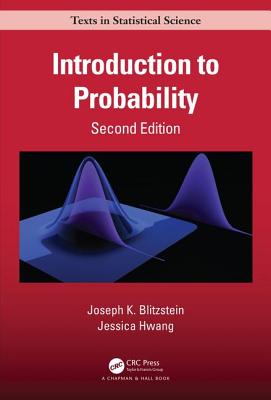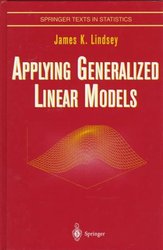Modern Regression Methods, 2/e (Hardcover)
暫譯: 現代迴歸方法,第2版 (精裝本)
Thomas P. Ryan
- 出版商: Wiley
- 出版日期: 2008-10-01
- 售價: $1,400
- 貴賓價: 9.8 折 $1,372
- 語言: 英文
- 頁數: 672
- 裝訂: Hardcover
- ISBN: 0470081864
- ISBN-13: 9780470081860
下單後立即進貨 (約5~7天)
買這商品的人也買了...
相關主題
商品描述
"Over the years, I have had the opportunity to teach several regression courses, and I cannot think of a better undergraduate text than this one." (The American Statistician)
"The book is well written and has many exercises. It can serve as a very good textbook for scientists and engineers, with only basic statistics as a prerequisite. I also highly recommend it to practitioners who want to solve real-life prediction problems." (Computing Reviews)
Modern Regression Methods, Second Edition maintains the accessible organization, breadth of coverage, and cutting-edge appeal that earned its predecessor the title of being one of the top five books for statisticians by an Amstat News book editor in 2003. This new edition has been updated and enhanced to include all-new information on the latest advances and research in the evolving field of regression analysis.
The book provides a unique treatment of fundamental regression methods, such as diagnostics, transformations, robust regression, and ridge regression. Unifying key concepts and procedures, this new edition emphasizes applications to provide a more hands-on and comprehensive understanding of regression diagnostics. New features of the Second Edition include:
-
A revised chapter on logistic regression, including improved methods of parameter estimation
-
A new chapter focusing on additional topics of study in regression, including quantile regression, semiparametric regression, and Poisson regression
-
A wealth of new and updated exercises with worked solutions
-
An extensive FTP site complete with Minitab macros, which allow the reader to compute analyses, and specialized procedures
-
Updated references at the end of each chapter that direct the reader to the appropriate resources for further study
An accessible guide to state-of-the-art regression techniques, Modern Regression Methods, Second Edition is an excellent book for courses in regression analysis at the upper-undergraduate and graduate levels. It is also a valuable reference for practicing statisticians, engineers, and physical scientists.
商品描述(中文翻譯)
「多年來,我有機會教授幾門迴歸課程,我無法想出比這本書更好的本科教材。」(《美國統計學家》)
「這本書寫得很好,並且有許多練習題。它可以作為科學家和工程師的非常好的教科書,僅需基本統計學作為先決條件。我也強烈推薦給希望解決現實預測問題的實務工作者。」(《計算評論》)
《現代迴歸方法,第二版》保持了可接觸的組織結構、廣泛的涵蓋範圍和前沿的吸引力,使其前身在2003年被《Amstat News》的書籍編輯評選為統計學家五大最佳書籍之一。這一新版已更新並增強,包含有關不斷發展的迴歸分析領域最新進展和研究的全新資訊。
本書對基本的迴歸方法提供了獨特的處理方式,如診斷、變換、穩健迴歸和脊迴歸。這一新版統一了關鍵概念和程序,強調應用,以提供對迴歸診斷更具實踐性和全面的理解。《第二版》的新特點包括:
- 修訂的邏輯迴歸章節,包括改進的參數估計方法
- 專注於迴歸研究的其他主題的新章節,包括分位數迴歸、半參數迴歸和泊松迴歸
- 大量全新和更新的練習題,附有解答
- 完整的FTP網站,提供Minitab宏,允許讀者進行分析計算和專門程序
- 每章結尾更新的參考文獻,引導讀者尋找進一步學習的適當資源
《現代迴歸方法,第二版》是一本可接觸的先進迴歸技術指南,是高年級本科生和研究生迴歸分析課程的優秀書籍。它也是實務統計學家、工程師和物理科學家的寶貴參考資料。
目錄大綱
Preface.
1. Introduction.
1.1 Simple Linear Regression Model.
1.2 Uses of Regression Models.
1.3 Graph the Data!
1.4 Estimation of s0 and s1.
1.5 Inferences from Regression Equations.
1.6 Regression Through the Origin.
1.7 Additional Examples.
1.8 Correlation.
1.9 Miscellaneous Uses of Regression.
1.10 Fixed Versus Random Regressors.
1.11 Missing Data.
1.12 Spurious Relationships.
1.13 Software.
1.14 Summary.
Appendix.
References.
Exercises.
2. Diagnostics and Remedial Measures.
2.1 Assumptions.
2.2 Residual Plots.
2.3 Transformations.
2.4 Influential Observations.
2.5 Outliers.
2.6 Measurement Error.
2.7 Software.
2.8 Summary.
Appendix.
References.
Exercises.
3. Regression with Matrix Algebra.
3.1 Introduction to Matrix Algebra.
3.2 Matrix Algebra Applied to Regression.
3.3 Summary.
Appendix.
References.
Exercises.
4. Introduction to Multiple Linear Regression.
4.1 An Example of Multiple Linear Regression.
4.2 Centering And Scaling.
4.3 Interpreting Multiple Regression Coefficients.
4.4 Indicator Variables.
4.5 Separation or Not?
4.6 Alternatives to Multiple Regression.
4.7 Software.
4.8 Summary.
References.
Exercises.
5. Plots in Multiple Regression.
5.1 Beyond Standardized Residual Plots.
5.2 Some Examples.
5.3 Which Plot?
5.4 Recommendations.
5.5 Partial Regression Plots.
5.6 Other Plots For Detecting Influential Observations.
5.7 Recent Contributions to Plots in Multiple Regression.
5.8 Lurking Variables.
5.9 Explanation of Two Data Sets Relative to R2.
5.10 Software.
5.11 Summary.
References.
Exercises.
6. Transformations in Multiple Regression.
6.1 Transforming Regressors.
6.2 Transforming Y.
6.3 Further Comments on the Normality Issue.
6.4 Box-Cox Transformation.
6.5 Box-Tidwell Revisited.
6.6 Combined Box-Cox and Box-Tidwell Approach.
6.7 Other Transformation Methods.
6.8 Transformation Diagnostics.
6.9 Software.
6.10 Summary.
References.
Exercises.
7. Selection of Regressors.
7.1 Forward Selection.
7.2 Backward Elimination.
7.3 Stepwise Regression.
7.4 All Possible Regressions.
7.5 Newer Methods.
7.6 Examples.
7.7 Variable Selection for Nonlinear Terms.
7.8 Must We Use a Subset?
7.9 Model Validation.
7.10 Software.
7.11 Summary.
Appendix.
References.
Exercises.
8. Polynomial and Trigonometric Terms.
8.1 Polynomial Terms.
8.2 Polynomial-Trigonometric Regression.
8.3 Software.
8.4 Summary.
References.
Exercises.
9. Logistic Regression.
9.1 Introduction.
9.2 One Regressor.
9.3 A Simulated Example.
9.4 Detecting Complete Separation, Quasicomplete Separation and Near Separation.
9.5 Measuring the Worth of the Model.
9.6 Determining the Worth of the Individual Regressors.
9.7 Confidence Intervals.
9.8 Exact Prediction.
9.9 An Example With Real Data.
9.10 An Example of Multiple Logistic Regression.
9.11 Multicollinearity in Multiple Logistic Regression.
9.12 Osteogenic Sarcoma Data Set.
9.13 Missing Data.
9.14 Sample Size Determination.
9.15 Polytomous Logistic Regression.
9.16 Logistic Regression Variations.
9.17 Alternatives to Logistic Regression.
9.18 Software for Logistic Regression.
9.19 Summary.
Appendix.
References.
Exercises.
10. Nonparametric Regression.
10.1 Relaxing Regression Assumptions.
10.2 Monotone Regression.
10.3 Smoothers.
10.4 Variable Selection.
10.5 Important Considerations in Smoothing.
10.6 Sliced Inverse Regression.
10.7 Projection Pursuit Regression.
10.8 Software.
10.9 Summary.
Appendix.
References.
Exercises.
11. Robust Regression.
11.1 The Need for Robust Regression.
11.2 Types of Outliers.
11.3 Historical Development of Robust Regression.
11.4 Goals of Robust Regression.
11.5 Proposed High Breakdown Point Estimators.
11.6 Approximating HBP Estimator Solutions.
11.7 Other Methods for Detecting Multiple Outliers.
11.8 Bounded Influence Estimators.
11.9 Multistage Procedures.
11.10 Other Robust Regression Estimators.
11.11 Applications.
11.12 Software for Robust Regression.
11.13 Summary.
References.
Exercises.
12. Ridge Regression.
12.1 Introduction.
12.2 How Do We Determine K?.
12.3 An Example.
12.4 Ridge Regression for Prediction.
12.5 Generalized Ridge Regression.
12.6 Inferences in Ridge Regression.
12.7 Some Practical Considerations.
12.8 Robust Ridge Regression.
12.9 Recent Developments in Ridge Regression.
12.10 Other Biased Estimators.
12.11 Software.
12.12 Summary.
Appendix.
References.
Exercises.
13. Nonlinear Regression.
13.1 Introduction.
13.2 Linear Versus Nonlinear Regression.
13.3 A Simple Nonlinear Example.
13.4 Relative Offset Convergence Criterion.
13.5 Adequacy of the Estimation Approach.
13.6 Computational Considerations.
13.7 Determining Model Adequacy.
13.7.1 Lack-of-Fit Test.
13.8 Inferences.
13.9 An Application.
13.10 Rational Functions.
13.11 Robust Nonlinear Regression.
13.12 Applications.
13.13 Teaching Tools.
13.14 Recent Developments.
13.15 Software.
13.16 Summary.
Appendix.
References.
Exercises.
14. Experimental Designs for Regression.
14.1 Objectives for Experimental Designs.
14.2 Equal Leverage Points.
14.3 Other Desirable Properties of Experimental Designs.
14.4 Model Misspecification.
14.5 Range of Regressors.
14.6 Algorithms for Design Construction.
14.7 Designs for Polynomial Regression.
14.8 Designs for Logistic Regression.
14.9 Designs for Nonlinear Regression.
14.10 Software.
14.11 Summary.
References.
Exercises.
15. Miscellaneous Topics in Regression.
15.1 Piecewise Regression and Alternatives.
15.2 Semiparametric Regression.
15.3 Quantile Regression.
15.4 Poisson Regression.
15.5 Negative Binomial Regression.
15.6 Cox Regression.
15.7 Probit Regression.
15.8 Censored Regression and Truncated Regression.
15.8.1 Tobit Regression.
15.9 Constrained Regression.
15.10 Interval Regression.
15.11 Random Coefficient Regression.
15.12 Partial Least Squares Regression.
15.13 Errors-in-Variables Regression.
15.14 Regression with Life Data.
15.15 Use of Regression in Survey Sampling.
15.16 Bayesian Regression.
15.17 Instrumental Variables Regression.
15.18 Shrinkage Estimators.
15.19 Meta-Regression.
15.20 Classification and Regression Trees (CART).
15.21 Multivariate Regression.
References.
Exercises.
16. Analysis of Real Data Sets.
16.1 Analyzing Buchanan’s Presidential Vote in Palm Beach County in 2000.
16.2 Water Quality Data.
16.3 Predicting Lifespan?
16.4 Scottish Hill Races Data.
16.5 Leukemia Data.
16.6 Dosage Response Data.
16.7 A Strategy for Analyzing Regression Data.
16.8 Summary.
References.
Exercises.
Index.
目錄大綱(中文翻譯)
Preface.
1. Introduction.
1.1 Simple Linear Regression Model.
1.2 Uses of Regression Models.
1.3 Graph the Data!
1.4 Estimation of s0 and s1.
1.5 Inferences from Regression Equations.
1.6 Regression Through the Origin.
1.7 Additional Examples.
1.8 Correlation.
1.9 Miscellaneous Uses of Regression.
1.10 Fixed Versus Random Regressors.
1.11 Missing Data.
1.12 Spurious Relationships.
1.13 Software.
1.14 Summary.
Appendix.
References.
Exercises.
2. Diagnostics and Remedial Measures.
2.1 Assumptions.
2.2 Residual Plots.
2.3 Transformations.
2.4 Influential Observations.
2.5 Outliers.
2.6 Measurement Error.
2.7 Software.
2.8 Summary.
Appendix.
References.
Exercises.
3. Regression with Matrix Algebra.
3.1 Introduction to Matrix Algebra.
3.2 Matrix Algebra Applied to Regression.
3.3 Summary.
Appendix.
References.
Exercises.
4. Introduction to Multiple Linear Regression.
4.1 An Example of Multiple Linear Regression.
4.2 Centering And Scaling.
4.3 Interpreting Multiple Regression Coefficients.
4.4 Indicator Variables.
4.5 Separation or Not?
4.6 Alternatives to Multiple Regression.
4.7 Software.
4.8 Summary.
References.
Exercises.
5. Plots in Multiple Regression.
5.1 Beyond Standardized Residual Plots.
5.2 Some Examples.
5.3 Which Plot?
5.4 Recommendations.
5.5 Partial Regression Plots.
5.6 Other Plots For Detecting Influential Observations.
5.7 Recent Contributions to Plots in Multiple Regression.
5.8 Lurking Variables.
5.9 Explanation of Two Data Sets Relative to R2.
5.10 Software.
5.11 Summary.
References.
Exercises.
6. Transformations in Multiple Regression.
6.1 Transforming Regressors.
6.2 Transforming Y.
6.3 Further Comments on the Normality Issue.
6.4 Box-Cox Transformation.
6.5 Box-Tidwell Revisited.
6.6 Combined Box-Cox and Box-Tidwell Approach.
6.7 Other Transformation Methods.
6.8 Transformation Diagnostics.
6.9 Software.
6.10 Summary.
References.
Exercises.
7. Selection of Regressors.
7.1 Forward Selection.
7.2 Backward Elimination.
7.3 Stepwise Regression.
7.4 All Possible Regressions.
7.5 Newer Methods.
7.6 Examples.
7.7 Variable Selection for Nonlinear Terms.
7.8 Must We Use a Subset?
7.9 Model Validation.
7.10 Software.
7.11 Summary.
Appendix.
References.
Exercises.
8. Polynomial and Trigonometric Terms.
8.1 Polynomial Terms.
8.2 Polynomial-Trigonometric Regression.
8.3 Software.
8.4 Summary.
References.
Exercises.
9. Logistic Regression.
9.1 Introduction.
9.2 One Regressor.
9.3 A Simulated Example.
9.4 Detecting Complete Separation, Quasicomplete Separation and Near Separation.
9.5 Measuring the Worth of the Model.
9.6 Determining the Worth of the Individual Regressors.
9.7 Confidence Intervals.
9.8 Exact Prediction.
9.9 An Example With Real Data.
9.10 An Example of Multiple Logistic Regression.
9.11 Multicollinearity in Multiple Logistic Regression.
9.12 Osteogenic Sarcoma Data Set.
9.13 Missing Data.
9.14 Sample Size Determination.
9.15 Polytomous Logistic Regression.
9.16 Logistic Regression Variations.
9.17 Alternatives to Logistic Regression.
9.18 Software for Logistic Regression.
9.19 Summary.
Appendix.
References.
Exercises.
10. Nonparametric Regression.
10.1 Relaxing Regression Assumptions.
10.2 Monotone Regression.
10.3 Smoothers.
10.4 Variable Selection.
10.5 Important Considerations in Smoothing.
10.6 Sliced Inverse Regression.
10.7 Projection Pursuit Regression.
10.8 Software.
10.9 Summary.
Appendix.
References.
Exercises.
11. Robust Regression.
11.1 The Need for Robust Regression.
11.2 Types of Outliers.
11.3 Historical Development of Robust Regression.
11.4 Goals of Robust Regression.
11.5 Proposed High Breakdown Point Estimators.
11.6 Approximating HBP Estimator Solutions.
11.7 Other Methods for Detecting Multiple Outliers.
11.8 Bounded Influence Estimators.
11.9 Multistage Procedures.
11.10 Other Robust Regression Estimators.
11.11 Applications.
11.12 Software for Robust Regression.
11.13 Summary.
References.
Exercises.
12. Ridge Regression.
12.1 Introduction.
12.2 How Do We Determine K?.
12.3 An Example.
12.4 Ridge Regression for Prediction.
12.5 Generalized Ridge Regression.
12.6 Inferences in Ridge Regression.
12.7 Some Practical Considerations.
12.8 Robust Ridge Regression.
12.9 Recent Developments in Ridge Regression.
12.10 Other Biased Estimators.
12.11 Software.
12.12 Summary.
Appendix.
References.
Exercises.
13. Nonlinear Regression.
13.1 Introduction.
13.2 Linear Versus Nonlinear Regression.
13.3 A Simple Nonlinear Example.
13.4 Relative Offset Convergence Criterion.
13.5 Adequacy of the Estimation Approach.
13.6 Computational Considerations.
13.7 Determining Model Adequacy.
13.7.1 Lack-of-Fit Test.
13.8 Inferences.
13.9 An Application.
13.10 Rational Functions.
13.11 Robust Nonlinear Regression.
13.12 Applications.
13.13 Teaching Tools.
13.14 Recent Developments.
13.15 Software.
13.16 Summary.
Appendix.
References.
Exercises.
14. Experimental Designs for Regression.
14.1 Objectives for Experimental Designs.
14.2 Equal Leverage Points.
14.3 Other Desirable Properties of Experimental Designs.
14.4 Model Misspecification.
14.5 Range of Regressors.
14.6 Algorithms for Design Construction.
14.7 Designs for Polynomial Regression.
14.8 Designs for Logistic Regression.
14.9 Designs for Nonlinear Regression.
14.10 Software.
14.11 Summary.
References.
Exercises.
15. Miscellaneous Topics in Regression.
15.1 Piecewise Regression and Alternatives.
15.2 Semiparametric Regression.
15.3 Quantile Regression.
15.4 Poisson Regression.
15.5 Negative Binomial Regression.
15.6 Cox Regression.
15.7 Probit Regression.
15.8 Censored Regression and Truncated Regression.
15.8.1 Tobit Regression.
15.9 Constrained Regression.
15.10 Interval Regression.
15.11 Random Coefficient Regression.
15.12 Partial Least Squares Regression.
15.13 Errors-in-Variables Regression.
15.14 Regression with Life Data.
15.15 Use of Regression in Survey Sampling.
15.16 Bayesian Regression.
15.17 Instrumental Variables Regression.
15.18 Shrinkage Estimators.
15.19 Meta-Regression.
15.20 Classification and Regression Trees (CART).
15.21 Multivariate Regression.
References.
Exercises.
16. Analysis of Real Data Sets.
16.1 Analyzing Buchanan’s Presidential Vote in Palm Beach County in 2000.
16.2 Water Quality Data.
16.3 Predicting Lifespan?
16.4 Scottish Hill Races Data.
16.5 Leukemia Data.
16.6 Dosage Response Data.
16.7 A Strategy for Analyzing Regression Data.
16.8 Summary.
References.
Exercises.
Index.














